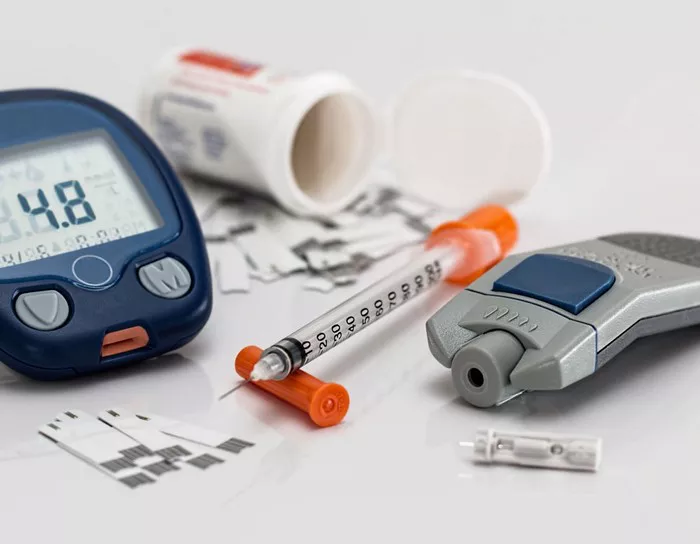Insulin, a critical hormone in glucose metabolism, is essential for regulating blood sugar levels and maintaining metabolic balance in the body. Since its discovery nearly a century ago, insulin has evolved significantly, leading to the development of various formulations and analogs with distinct properties and characteristics. In this comprehensive article, we will explore the diverse landscape of insulin products, including their different names, classifications, and therapeutic indications.
Understanding Insulin: A Brief Overview
Insulin is a peptide hormone produced by the beta cells of the pancreatic islets of Langerhans. Its primary role is to facilitate the uptake of glucose into cells and promote its storage as glycogen in the liver and muscles. Insulin also inhibits glucose production in the liver and regulates lipid metabolism, making it a central player in glucose homeostasis and energy metabolism.
Classification of Insulin
Insulin formulations are classified based on several factors, including their onset, peak, and duration of action. The main categories of insulin include:
1. Rapid-Acting Insulin: These insulins have a rapid onset of action (usually within 15 minutes), peak effect within 1-2 hours, and duration of action of 3-4 hours. They are typically administered before meals to control postprandial blood sugar spikes.
2. Short-Acting Insulin: Short-acting insulins have a slower onset of action (30-60 minutes), peak effect within 2-3 hours, and duration of action of 4-6 hours. They are usually administered 30 minutes before meals to control postprandial blood sugar levels.
3. Intermediate-Acting Insulin: These insulins have a slower onset of action (1-2 hours), peak effect within 4-8 hours, and duration of action of 12-18 hours. They provide basal insulin coverage and are often used in combination with rapid-acting or short-acting insulin to provide both basal and prandial coverage.
4. Long-Acting Insulin: Long-acting insulins have a gradual onset of action (1-2 hours), peakless profile, and duration of action of up to 24 hours. They provide basal insulin coverage and are administered once daily to maintain stable blood sugar levels throughout the day and night.
Different Names of Insulin
Insulin products are marketed under various brand names, each representing a specific formulation or analog with unique properties. Below are some of the different names of insulin:
1. Human Insulin (Regular Insulin):
- Humulin R (Eli Lilly and Company): Humulin R is a short-acting human insulin used to control blood sugar levels in individuals with diabetes mellitus. It is administered subcutaneously before meals to mimic the physiological secretion of insulin by the pancreas.
- Novolin R (Novo Nordisk): Novolin R is another brand of short-acting human insulin that is structurally identical to endogenous insulin. It is available in vial and pen formulations for subcutaneous injection.
2. Rapid-Acting Insulin Analogues:
- Humalog (Lilly): Humalog (insulin lispro) is a rapid-acting insulin analog that has a faster onset of action and shorter duration of action compared to regular insulin. It is administered shortly before or immediately after meals to control postprandial blood sugar levels.
- Novolog (Novo Nordisk): Novolog (insulin aspart) is another rapid-acting insulin analog with similar properties to Humalog. It is designed to mimic the physiological release of insulin in response to meals.
-
3. Intermediate-Acting Insulin (NPH Insulin):
- Humulin N (Lilly): Humulin N is an intermediate-acting insulin that contains protamine, which slows down its absorption and extends its duration of action. It is typically used to provide basal insulin coverage in combination with rapid-acting insulin for prandial coverage.
- Novolin N (Novo Nordisk): Novolin N is another brand of intermediate-acting insulin that provides basal insulin coverage over an extended period. It is administered once or twice daily to maintain stable blood sugar levels between meals and overnight.
4. Long-Acting Insulin Analogues:
- Lantus (Sanofi): Lantus (insulin glargine) is a long-acting insulin analog with a peakless profile and duration of action of up to 24 hours. It is administered once daily at the same time each day to provide basal insulin coverage throughout the day and night.
- Levemir (Novo Nordisk): Levemir (insulin detemir) is another long-acting insulin analog that provides basal insulin coverage with a duration of action of up to 24 hours. It offers flexibility in dosing and can be administered once or twice daily, depending on individual needs.
5. Pre-Mixed Insulin Formulations:
- Humulin 70/30 (Lilly): Humulin 70/30 is a pre-mixed formulation of 70% NPH insulin and 30% regular insulin. It is commonly used to provide both basal and prandial insulin coverage in individuals with diabetes mellitus.
- Novolog 70/30 (Novo Nordisk): Novolog 70/30 is a pre-mixed formulation of 70% insulin aspart protamine and 30% insulin aspart. It offers a convenient option for individuals who require both basal and prandial insulin coverage.
-
-
Therapeutic Indications for Insulin Therapy
Insulin therapy is indicated for the treatment of various forms of diabetes mellitus, including:
1. Type 1 Diabetes Mellitus: Individuals with type 1 diabetes require exogenous insulin therapy to replace deficient insulin secretion and regulate blood sugar levels effectively. Insulin therapy is initiated shortly after diagnosis and is administered via subcutaneous injections or continuous subcutaneous insulin infusion (insulin pump therapy).
2. Type 2 Diabetes Mellitus: While many individuals with type 2 diabetes initially respond to oral antidiabetic medications and lifestyle modifications, progressive beta cell dysfunction may necessitate the addition of insulin therapy to achieve glycemic targets. Insulin therapy is typically initiated when oral medications fail to adequately control blood sugar levels or when insulin resistance is severe.
3. Gestational Diabetes Mellitus: Gestational diabetes mellitus (GDM) is a form of diabetes that develops during pregnancy and is characterized by elevated blood sugar levels. Insulin therapy may be necessary for women with GDM who fail to achieve glycemic control with diet and exercise or who require pharmacological treatment to maintain target blood sugar levels.
4. Diabetic Ketoacidosis (DKA): DKA is a life-threatening complication of diabetes characterized by severe hyperglycemia, ketosis, and metabolic acidosis. Insulin therapy is the cornerstone of treatment for DKA and is administered intravenously to rapidly lower blood sugar levels and correct acid-base imbalances.
Conclusion
Insulin therapy remains a cornerstone of treatment for individuals with diabetes mellitus, providing essential support for maintaining glycemic control and preventing complications associated with the disease. With the diverse array of insulin formulations and analogs available today, healthcare providers can tailor treatment regimens to meet the individual needs and preferences of patients with diabetes. By understanding the different names, classifications, and therapeutic indications of insulin, healthcare providers can empower patients to effectively manage their diabetes and improve their quality of life. Ongoing research and advancements in insulin therapy continue to pave the way for innovative treatment options and improved outcomes for individuals living with diabetes mellitus.


























